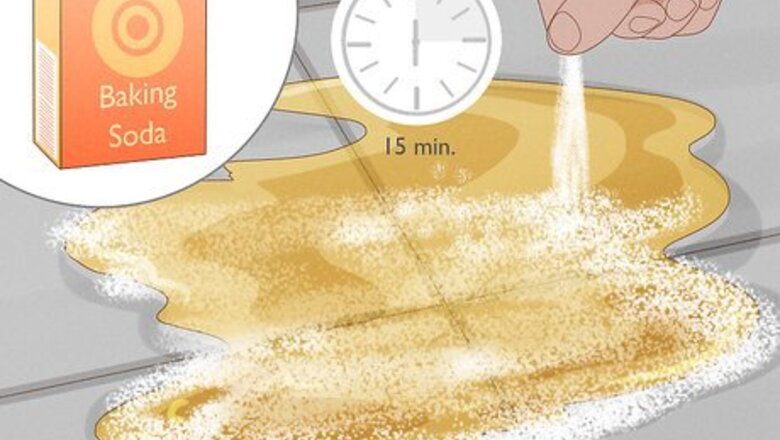
views
Removing Oil Off Tile Floors
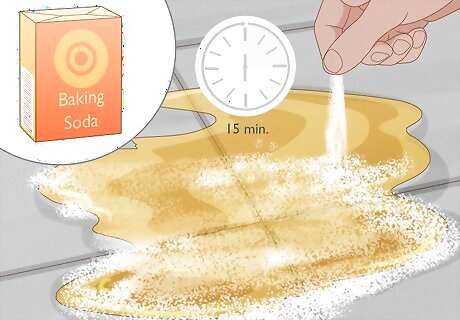
Sprinkle an absorbent over the oil, like baking soda or cornstarch. Pour enough on top of the oil spill to completely coat it. Wait 10-15 minutes so the powder can absorb as much oil as possible. Lots of materials around the house or from outside can soak up oil. You can use wood shavings, sand, and even cat litter. Household absorbents work best on new stains that are still moist. Remove any broken glass before you clean up the oil.

Wipe up the soaked up oil with a paper towel. When you notice the mix from the household absorbent and oil is cakey, grab a dustpan and a paper towel. Clutch onto the top of your clumped mound with your paper towel and scoop it up from the bottom with your dustpan. Once it’s in your dustpan, dump it in the trash. A cakey or gummy texture shows that the household absorbent has soaked up a lot of oil. If it's still really powdery, you should wait longer.
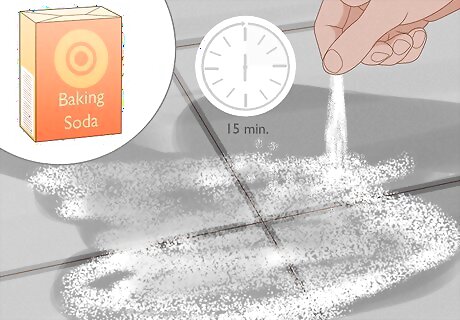
Add another layer of your absorbent if there’s any remaining oil. A little bit of oil residue might be left behind. Coat any drops or streaks of oil with your chosen absorbent and repeat the process of waiting 10-15 minutes before throwing out any remaining clumped up oil. Keep extra absorbent supplies around. Sometimes, you'll need to pour out a lot. You can stock a box or two of corn starch or baking soda for future messes. You can use an absorbent paper towel to remove as much grease as possible. Be careful not to spread the grease. Instead, blot the area to soak up extra grease.
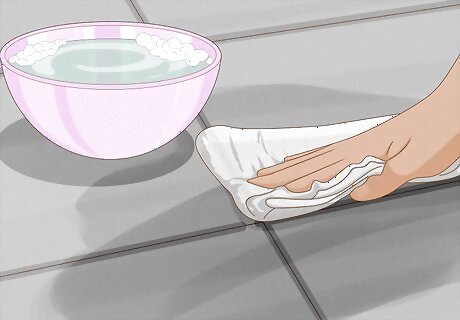
Wipe down the area with a paper towel and warm, soapy water. This will get rid of any lingering oil residue. The soap should cut right through the oil. You can use dishwashing soap like Dawn. It is a degreaser and is extremely effective. You can use it on linoleum, vinyl, and ceramic floorings.
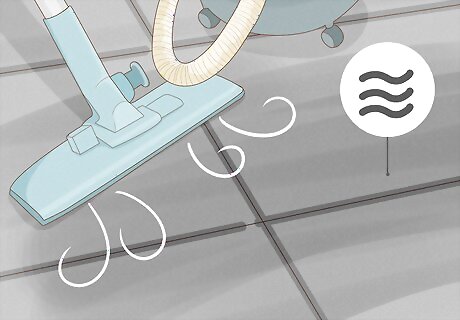
Wait for the tiles to dry, then vacuum them. Vacuuming will get rid of any leftover powder or grit on your floor from cleaning up the oil, plus it will remove any tiny pieces of glass if you dropped a bottle. Wipe down and dry your oil bottles. If your oil spill is from dropping one, then making sure none of your bottles are sticky or slippery will prevent future messes.
Cleaning Stubborn Oil Stains
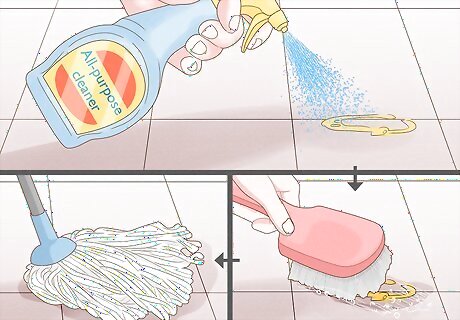
Spray the oil with an all-purpose cleaner. Many all-purpose cleaners are used in the food service industry, so they’re formulated to work on oil stains. Most are non-acidic and formulated with natural ingredients. It’s great to have one of these products in your kitchen both for your clean-up needs and for the environment. Let the all-purpose cleaner sit for 2-3 minutes. This allows more time for the stain-fighting chemicals to soak into the oil. After waiting for it to settle, scrub the sprayed down spot with a brush. You’ll break up the oil and polish your tiles. Mop up the all-purpose cleaner with water and dry the area with a paper towel, rag, or dry mop. Alternatively, you can use a commercial grade degreaser specifically made for that type of flooring.
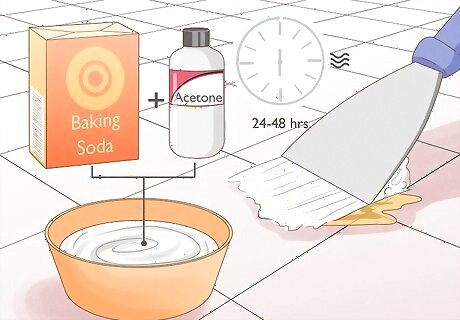
Apply a paste mixed with acetone and baking soda. First, wet the stained area. Then, mix up acetone and baking soda until it’s the consistency of pancake batter or peanut butter. Next, use a scraper to coat your set-in oil stain with it. Seal the mixture with plastic and tape. Wait for 24 to 48 hours, then scrape up the paste. Use the same scraper to apply and scoop up paste. Just wash it off after you’ve coated your oil stain. Wood and plastic scrapers are both effective. Acetone is only mildly acidic, but it’s a chemical that easily dissolves oil. Adding baking soda to acetone helps you create a thick paste, sometimes called a “poultice,” that’s easy to apply on top of an oil stain. Repeat the same process if parts of the oil stain still remain.
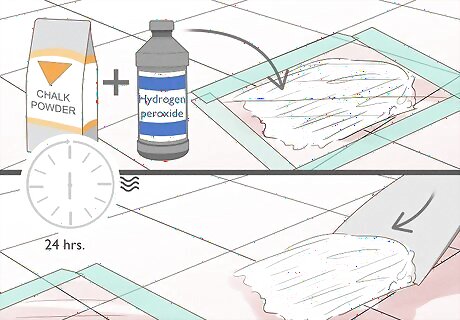
Use a paste made of 40% hydrogen peroxide and any white absorbent. Mix these two ingredients until you get a paste with the consistency of peanut butter. Coat the oil stain with a tool like a scraper or putty knife. Your layer of paste should be 0.25 inches (0.64 cm) thick. Cover it with plastic wrap, cut out 1 or 2 slits with a knife, and let it sit for 24 hours. Take off the plastic wrap and scrape off the hardened paste with your favorite tool. Rinse and dry the area when you’re done treating the oil stain. You can repeat the process with your home formula until your oil stain is gone. Hydrogen peroxide is another weak acid that won’t damage natural stone tiles. White absorbents let you thicken it to make a paste that won't stain your floors.
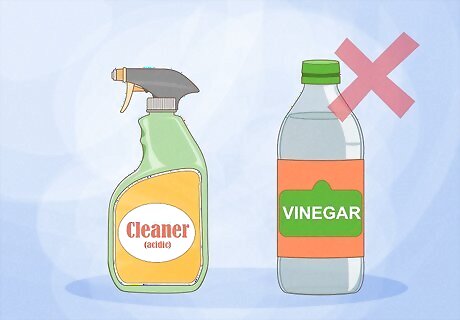
Avoid cleaning tile floors with acidic cleaners. You don’t want to reach for any product with acid, even a household item like vinegar. Many floor tiles are made of natural stone, and acids can stain the surface or strip it of its color. Most solutions for floor tiles aren’t highly acidic at all and are mixed with products that are a base, like baking soda.


















Comments
0 comment